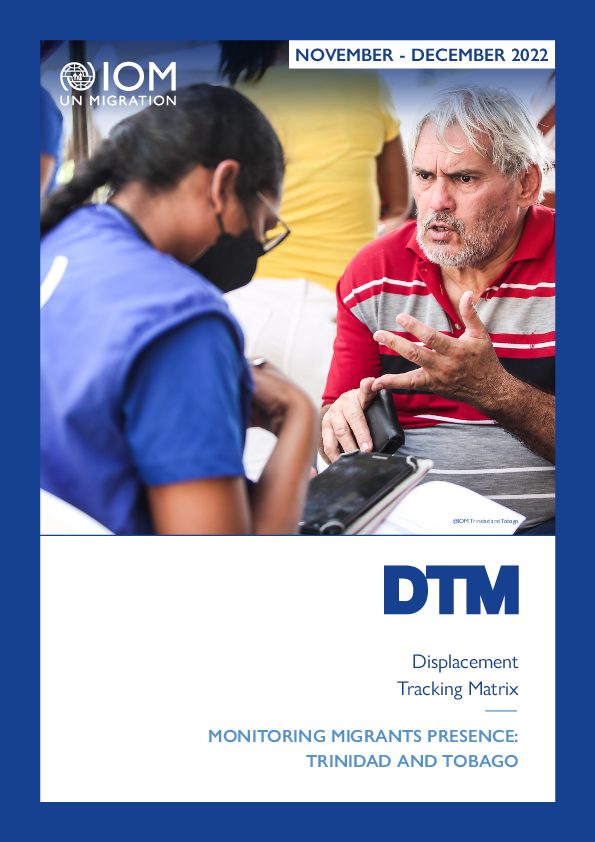-
Countries
-
Data and Analysis
-
Special Focus
-
Crisis Responses
Trinidad and Tobago — Monitoring Venezuelan Citizens Presence, Round 5 (November - December 2022)

Contacter
jali@iom.int
Langue
English
Emplacement
Trinidad & Tobago
Période couverte
Sep 21 2022
Dec 31 2022
Activité
- Survey
- Flow Monitoring Survey
Trinidad and Tobago, along with several other states, continues to navigate the delicate course of the COVID-19 pandemic and its new variants. Consequently, an intensive vaccination program was advanced to safeguard its population against the worst impacts of the virus. Additionally, active COVID-19 cases and related fatalities in the country have significantly trended downward.
Nonetheless, health concerns are but one of the multifaceted complexities spurred by the pandemic as economic and labour market recoveries have been slow and headline inflation has accelerated. Juxtaposed with these realities, however, the situation of Venezuelan nationals continues to evolve. More pointedly, the Government of the Republic of Trinidad and Tobago’s (GORTT’s) registration and re-registration exercises for Venezuelans in 2019 and 2021 effectively legitimized the status of successful registrants and facilitated their access to legal employment opportunities.
Nevertheless, it is important to note that, anecdotally, there are accounts of some Venezuelan migrants returning to Bolivarian Republic of Venezuela (hereinafter, Venezuela) and in 2021 there was a major repatriation effort for Venezuelan nationals, spearheaded by the Venezuelan Embassy. Yet, concurrently, reports of irregular entries persist. The Displacement Tracking Matrix (DTM) 2022, therefore, offers a unique opportunity to explore the ever-changing situation of Venezuelan nationals against these backgrounds.
A total of 1,323 Venezuelan nationals were surveyed in DTM 2022, between November and December 2022. The areas with the highest
number of respondents were Chaguanas, Tunapuna/Piarco, and Penal/Debe.
